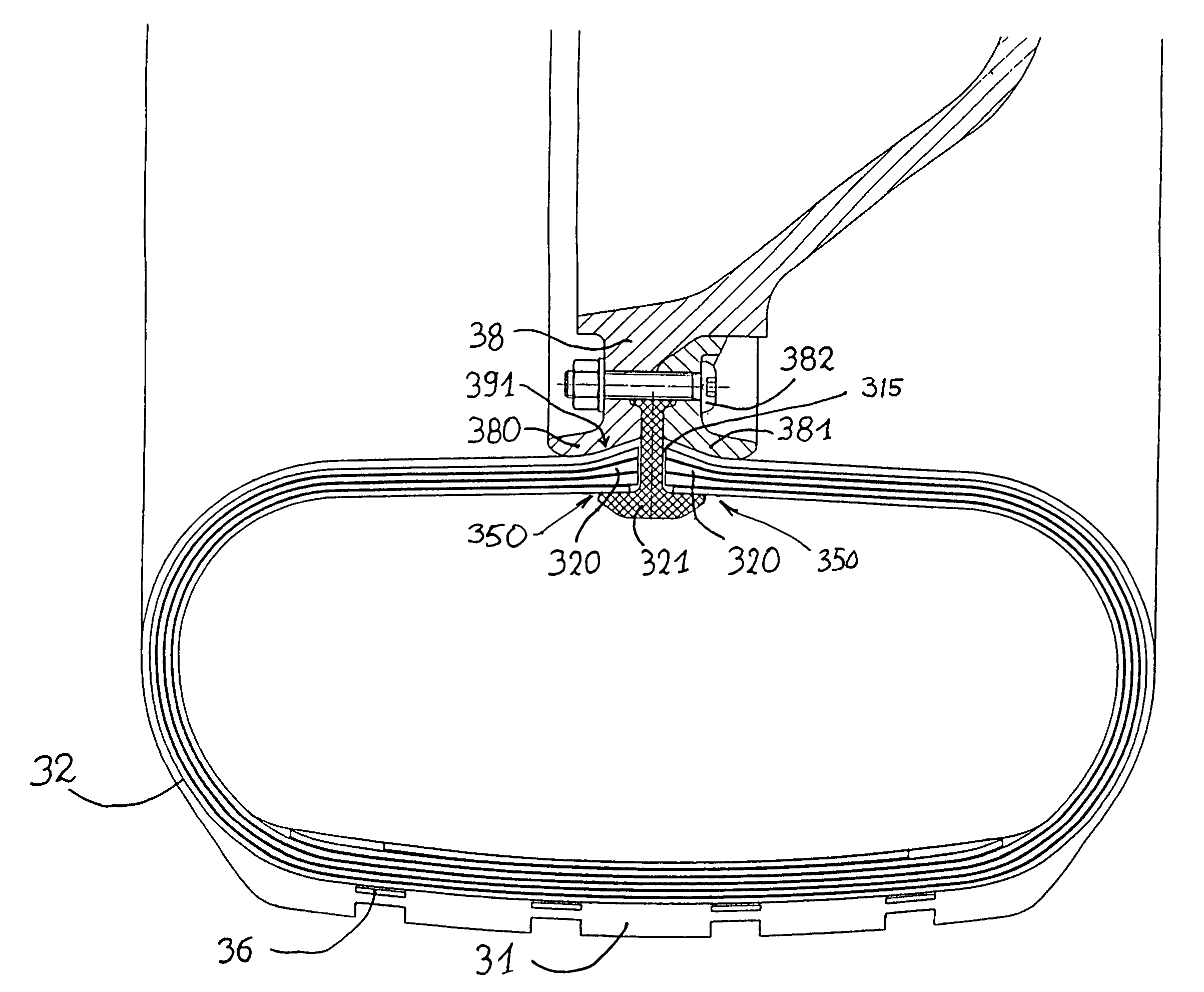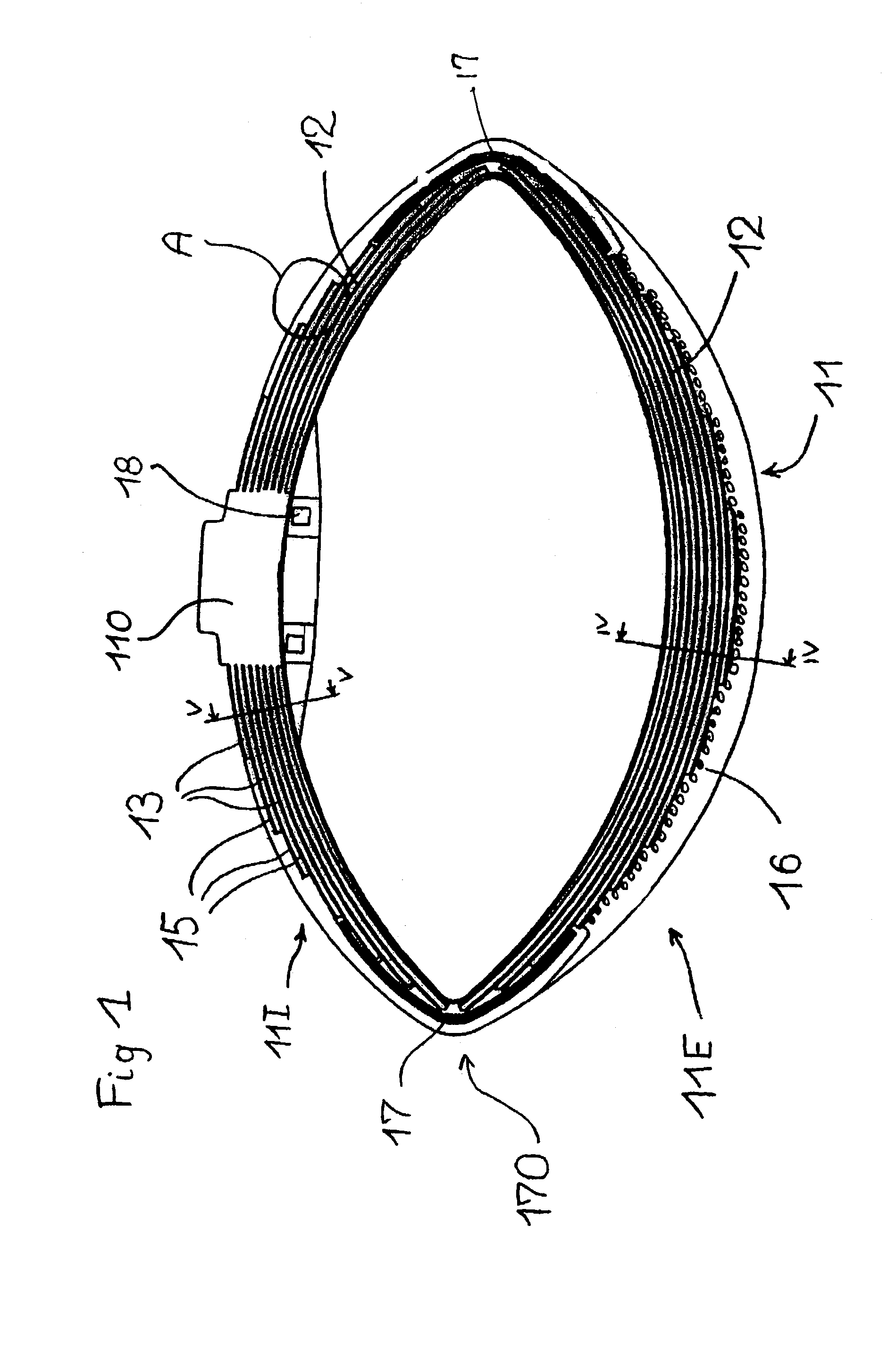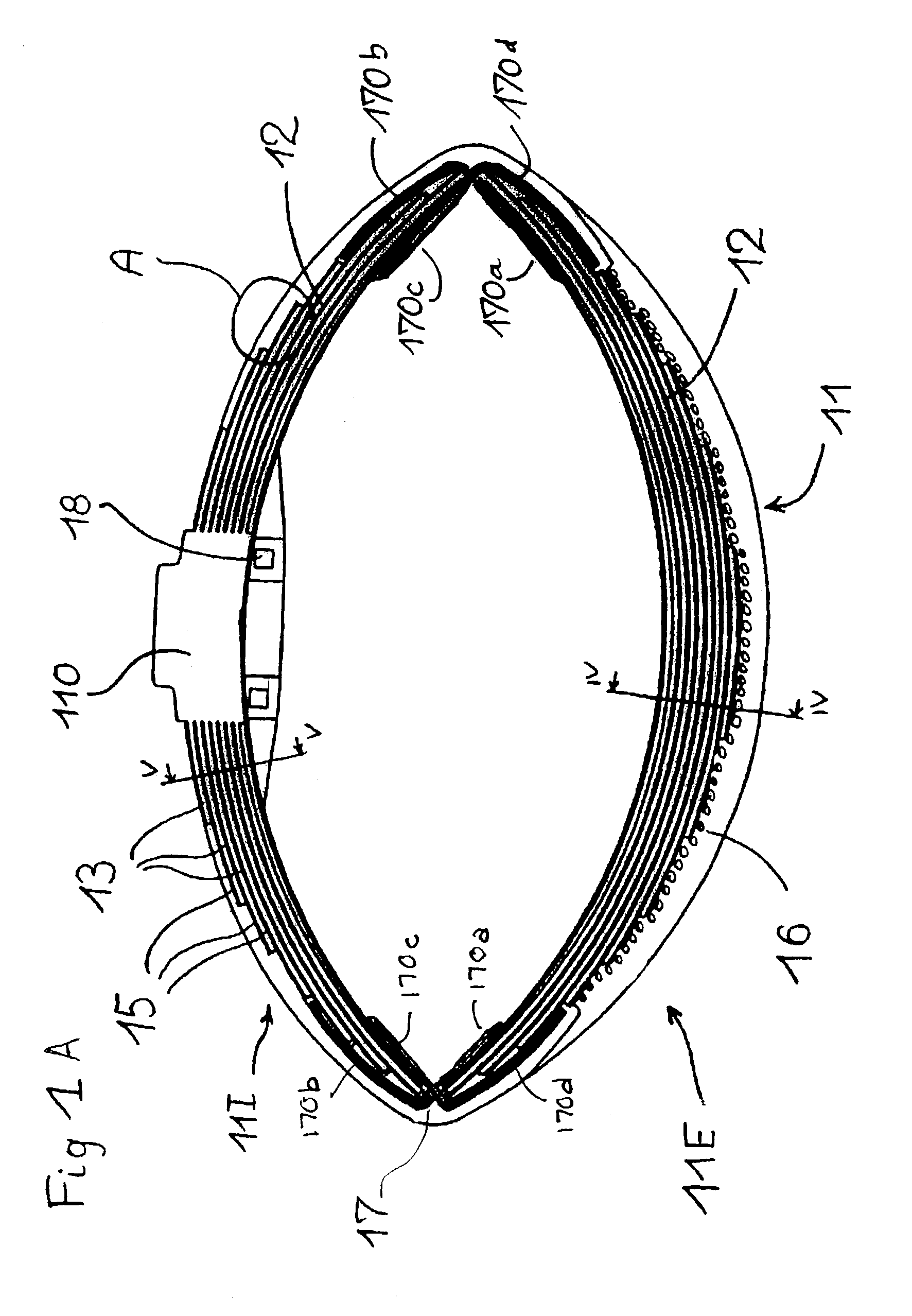Non-pneumatic resilient tire
a resilient tire and non-pneumatic technology, applied in the field of vehicle wheels, can solve the problems of tire not being tire is no longer able tire is no longer able to render the service for which it is designed under good conditions, etc., to achieve good comfort, good adherence, and good capacity to transmit considerable lateral thrust
- Summary
- Abstract
- Description
- Claims
- Application Information
AI Technical Summary
Benefits of technology
Problems solved by technology
Method used
Image
Examples
first embodiment
[0029]FIG. 1 shows a non-pneumatic tire having a tread 11 with a generally curved shape. The wall of the tire essentially contains two parts called “first and second structure parts 11I and 11E.” These first and second parts are radially superposed and form two springs acting in series and are respectively arranged radially inward and radially outward. One characteristic of this first embodiment is the pseudohinge separating the first 11I and second 11E structure parts, which constitutes a zone of lesser bending strength. This zone of the tire, by its constitution, does not oppose or just slightly opposes folding, that is, the relative rotation of the end parts of the first radially inner structure part and second radially outer structure part. The ends of each of the first and second bearing structure parts are situated roughly at the lateral ends of the bearing structure. The support elements consist of laminated elements 12. Each support element of the first bearing structure par...
second embodiment
[0052]The parameters of size and adjustment of properties of the non-pneumatic according to this second embodiment are, notably, those previously mentioned, namely, the thickness of layer 25 and each sheet 23, the number of sheets, the modulus of elasticity of the elastomer materials employed for the sheets, the modulus of elasticity of the elastomer used, and the arrangement of the sheets. Likewise, for the composition of the sheets 23, references should be made to the explanations supplied for sheet 13. The non-pneumatic tire also contains circumferential reinforcements (not shown) under the tread.
[0053]The non-pneumatic tire contains a tread 21, which can be very slightly bent when it is not supporting any load. The radially outer part of the bearing structure, that is, the zone containing the tread 21 and the part of the sidewalls 29 close to the tread 21, contribute only very little to deflection (radially) under the effect of the load. The sidewalls 29 and, in particular, the ...
third embodiment
[0057]FIGS. 8 and 9 illustrate a third embodiment very similar to the second. A tread 31 and support elements 32 are provided. The interconnecting structure contains circumferential reinforcements 36 in sheet form. The zone of attachment 350 is circumferentially slotted (not shown in the simplified views of FIGS. 10 and 11), so that the non-pneumatic tire presents a slot 315 defined between two connecting ribs 320 which are capable of being axially displaced relative to each other. The connecting ribs 320 are each intended to come in contact with the means of connection to a hub, notably, through a contact bearing 391 on the radially inner side of each of the connecting ribs 320. The ribs 320 are the attachment zone 350 referred to hereinabove.
[0058]It can be seen in FIG. 8 that the latter resembles a narrow rim designed to grip the connecting ribs 320 by means of a profiled part 321 of suitable shape. As shown in FIGS. 8 and 9, the profiled part 321 extends radially through the slo...
PUM
 Login to View More
Login to View More Abstract
Description
Claims
Application Information
 Login to View More
Login to View More - R&D
- Intellectual Property
- Life Sciences
- Materials
- Tech Scout
- Unparalleled Data Quality
- Higher Quality Content
- 60% Fewer Hallucinations
Browse by: Latest US Patents, China's latest patents, Technical Efficacy Thesaurus, Application Domain, Technology Topic, Popular Technical Reports.
© 2025 PatSnap. All rights reserved.Legal|Privacy policy|Modern Slavery Act Transparency Statement|Sitemap|About US| Contact US: help@patsnap.com



